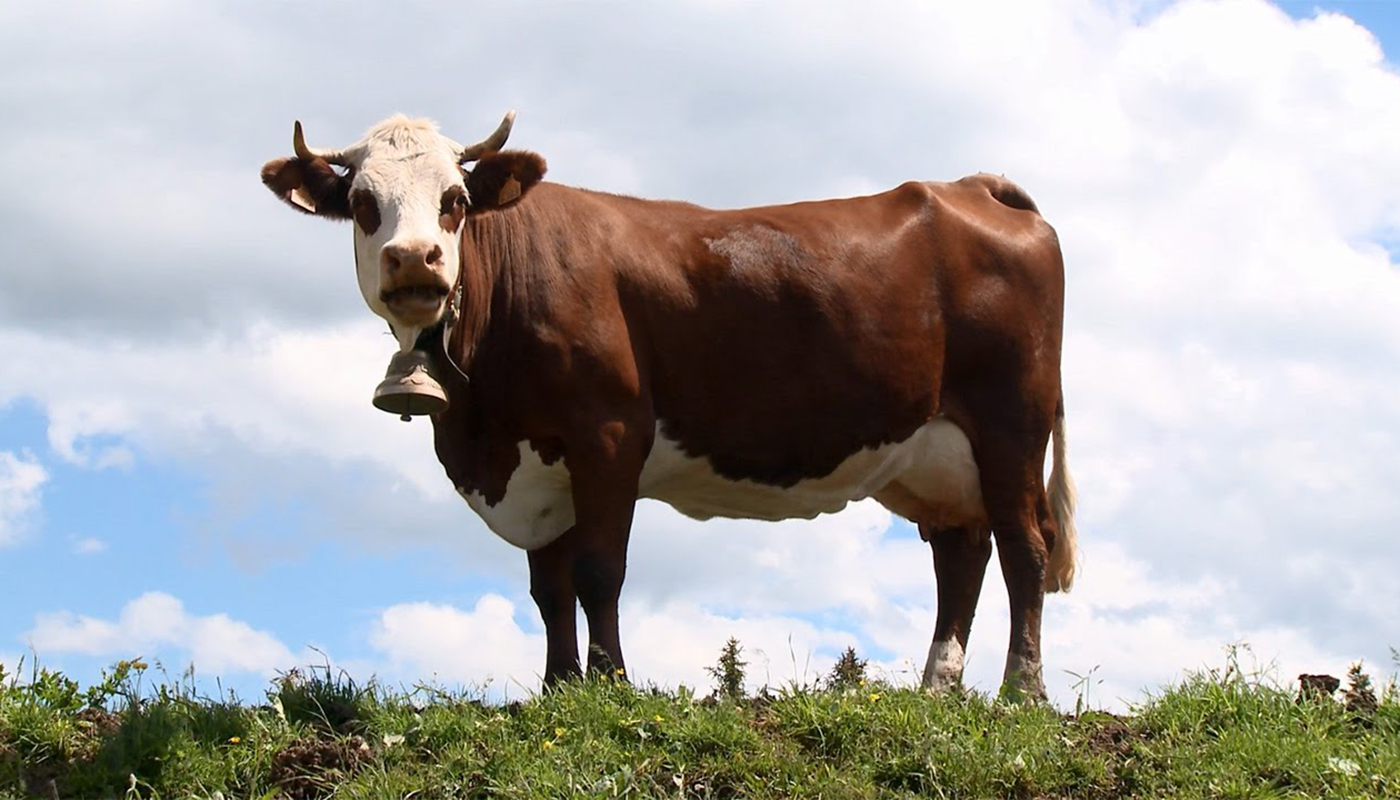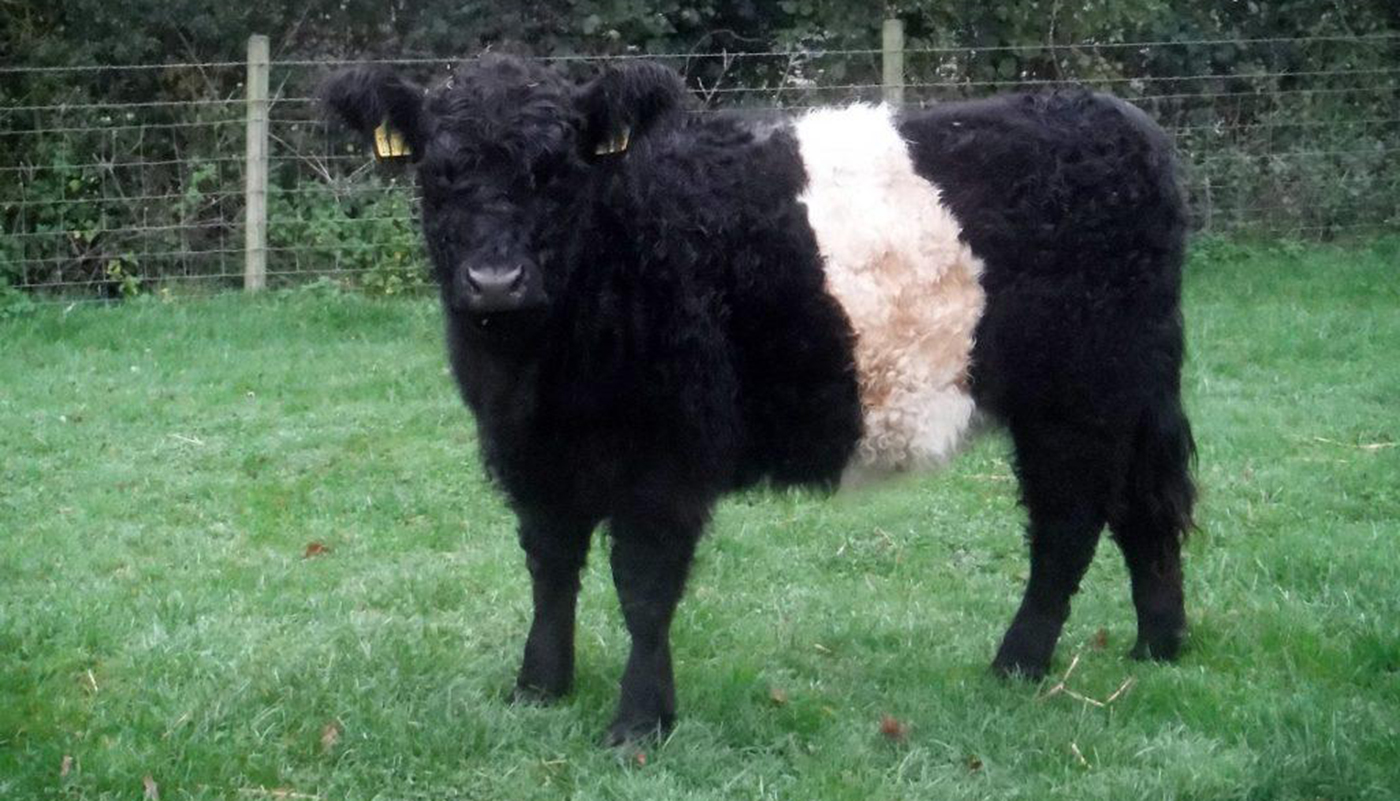
The Aberdeen Angus or just Angus cattle are truly magnificent beasts to behold. They are strongly muscled and usually have a pleasant temperament. They are one of the worlds top beef cattle breeds with a high quality of well marbled, succulent meat.
The Black Angus and Red Angus cattle are regarded as two separate breeds of cattle in the United States of America. In the United Kingdom, however, they are both registered under the same herd book as Aberdeen Angus or Angus in either black or red colors.
ANGUS BREED OF CATTLE QUICK PROFILE OVERVIEW |
|
|---|---|
| The Angus breed of cattle is a medium to large breed of Scottish cattle that are well known for their excellent meat quality. | |
| Country of Origin: | Scotland |
| Other Names: | Aberdeen Angus |
| Main Purpose: | Meat |
| You may Also Like: | 35 Best Cattle Breeds for Milk – Dairy Cattle |
| You may Also Like: | 47 Best Cattle Breeds for Meat – Beef Cattle |
| Can be used for | Breed, Meat |
| Ideal Climate: | Heat, Cold, Most Climates |
| Conservation Status: |
Not listed by the *ALC Status/Rarity: Common |
| Health Issues? | No known health issues. Some Angus does carry a recessive gene that could lead to birth defects if both the cow and bull that sired a calve carry the gene. These four defects caused by this are arthrogryposis multiplex (AM) or referred to as curly calf. Neuropathic hydrocephalus (NH) or called water head. Contractural arachnodactyly (CA) or referred to as a fawn syndrome. Notomelia which is a form of polymelia (or many legs). |
| Good Starter Cattle? | Novice to intermediate Cattle farmer/keeper level |
| Cattle Associations: | American Angus Association and the Angus Foundation |
| Cattle Clubs: | Please refer to American Angus Association and the Angus Foundation for more information |
| Where to buy them? | Please refer to American Angus Association and the Angus Foundation for more information |
| Child Friendly? | Livestock should not be left unattended around unsupervised children |
| General Information: | The Angus cattle breed has an excellent meat quality and as such most restaurants, butchers or various meat suppliers pride themselves with labeling their meat as 100% Angus beef. Angus cattle have been known to have quite a long life and cows as old as 12 to 13 years are still calving. They are less susceptible to skin diseases such as cancer eyes or sunburned udders. The Angus is highly adaptable to most weather conditions from the vicious winter climate of the Scottish Highlands to the warm Southern Conditions of Southern United States. They thrive under nearly any condition and are quite a low maintenance breed. The bulls can be very aggressive and should never be taken for granted even though the breed is mostly known as a docile compliant breed. When the cows are with calves, they too can be pretty aggressive when protecting their young. |
| Note: *ALC stands for American Livestock Conservancy | |
PHYSICAL CHARACTERISTICS |
||||||||||||||||||||||||||||||||
|---|---|---|---|---|---|---|---|---|---|---|---|---|---|---|---|---|---|---|---|---|---|---|---|---|---|---|---|---|---|---|---|---|
| The Angus breed of cattle is well muscled with an almost block shaped long body, short powerful legs, and a well-defined square head. Their coat is of solid color and their skin is usually black no matter if their coats are black or red. The cow’s udders are also dark which tend to protect her from being sunburned on them. | ||||||||||||||||||||||||||||||||
| Size: | Medium to large | |||||||||||||||||||||||||||||||
|
||||||||||||||||||||||||||||||||
COW BREEDING & MILKING INFORMATION |
|
|---|---|
| Most Cattle produce milk but not all of them are used in the dairy Cattle capacity for their milk. Cows only calve once a year and should have 12 to 14-month inter-calving cycle. The Angus can be very aggressive mothers and have a good milk quality but mainly for feeding her young and produce up until she weans them. They are known for their easy birthing with a good calving rate and healthy calves that stand and suckle almost right away. The cows have a high fertility rate and sometimes have a shorter gestation period than most other breeds. | |
| Breeding Period/cycle: | Usually lasts 6 to 24 hours Most ave. 12 to 16 hours Cows usually come on heat every 21 days. |
| Estrous cycle: | Ave. 17 days to 24 days Heifer – usually ave. 20 days Cows – usually ave. 21 days |
| Gestation Period: | Usually, around 272 to 289 days but most gestation is 279 days. Cows that are carrying bull calf’s their gestation period is usually a little longer than cows that are carrying heifer calves. |
| No. Calves/Litter: | 1 calf at a time. Cows rarely have twins or triplets, but it can happen |
| Lactation Period: | Cows lactation period can last for up to about 10 months (305) days. |
| Milking From: | 1 to 6 weeks after Calving |
| Drying off Period: | The cow should have a 12 to 14-month inter-calving cycle. Drying off period for around 60 days before she can calve again. |
| Milk Quality: | Good |
| Milk Ideal for: | Calves |
| You may Also Like: | 35 Best Cattle Breeds for Milk – Dairy Cattle |
CATTLE MEAT PRODUCTION INFORMATION |
||||||||
|---|---|---|---|---|---|---|---|---|
| Angus cattle are well known for their very good quality of meat. Some would argue that they have a superior meat quality. Studied have shown that the Angus cattle have a most efficient feed conversion rate which gives Angus cattle a high return on the investment on them. They have a natural marbling for a tender tasty meat. The cattle are fast to reach their mature weight and usually have a AAA grade rating. | ||||||||
| Meat Production? | Yes, Quality: Excellent | |||||||
|
||||||||
| You may Also Like: | 47 Best Cattle Breeds for Meat – Beef Cattle | |||||||
CATTLE SKIN PRODUCTION INFORMATION |
||||||||
|---|---|---|---|---|---|---|---|---|
| Most meat Cattle will have a skin by-product, and these are usually used in some form or just as a hide. | ||||||||
| Skin Production? | Yes, Quality: Good | |||||||
| Skin is used to Produce: | Calf/cow skin leather products such as shoes, car seats, fine leather coats, gloves, handbags, belts, furniture, rugs, etc. | |||||||
|
||||||||
HISTORY
The Angus or Aberdeen Angus was developed in the early part of the 19th century. They are said to have been bred from the black cattle of North East Scotland which were known as “hummlies” or “doddies”.
There were three main breeders of the cattle that were known to have bred them around the middle of the 1800s. Hugh Watson, who could be known as the founder of the breed, was the first to list his bull Old Jock which was the first Angus bull to be listed when the Herd Book for the Angus breed was opened in 1862. Another notable Angus that was listed by Hugh Watson was Old Granny who was said to have lived to be 35 years of age and produced 29 calves.
Old Granny and Old Jock are two Angus cattle that most Angus cattle around today can trace their lineage back to.
Another predominant name in the Angus breeding history is William McCombie and Sir George Macpherson-Grant. Sir George Macpherson-Grant was responsible for refining the breed.
The first ever Angus Society was formed in Scotland in 1879 and the American Aberdeen Angus Breeders Association was formed in 1883. The Association’s name was shorted to the American Angus Association in the 1950s and the name remains the same today.
The Black Angus is the most popular beef cattle breed in the United States with over 320 000 head of them registered.
Video
USEFUL LINKS
- Purebred Dairy Cattle Association
- American Dairy Association
- National Association of Animal Breeders
- American Dairy Science Association
- United States Cattlemen’s Association
- National Cattlemen’s Beef Association
- American National Cattlewomen
- Beef Cattle Breed Associations
- National Cattlemen’s Beef Association
- Fur Commission USA
- North American Meat Institute
- American Livestock Conservancy
- Animal Shelter (ASPCA)
- American Veterinary Medical Association
- American Animal Welfare Society
- American Animal Control
- American Society of Animal Science
- United States Department of Agriculture
 Beefmaster Cattle Breed – Everything You Need to Know
Beefmaster Cattle Breed – Everything You Need to Know Afrikaner Cattle Breed – Everything You Need to Know
Afrikaner Cattle Breed – Everything You Need to Know Normande Cattle Breed – Everything You Need to Know
Normande Cattle Breed – Everything You Need to Know Abondance Cattle Breed – Everything You Need to Know
Abondance Cattle Breed – Everything You Need to Know Parthenaise Cattle Breed – Everything You Need to Know
Parthenaise Cattle Breed – Everything You Need to Know Braunvieh Cattle Breed – Everything You Need to Know
Braunvieh Cattle Breed – Everything You Need to Know Agerolese Cattle Breed – Everything You Need to Know
Agerolese Cattle Breed – Everything You Need to Know Aubrac Cattle Breed – Everything You Need to Know
Aubrac Cattle Breed – Everything You Need to Know Simmental Cattle Breed – Everything You Need to Know
Simmental Cattle Breed – Everything You Need to Know Blonde d’Aquitaine Cattle Breed – Everything You Need to Know
Blonde d’Aquitaine Cattle Breed – Everything You Need to Know Red Poll Cattle Breed – Everything You Need to Know
Red Poll Cattle Breed – Everything You Need to Know Belted Galloway Cattle Breed – Everything You Need to Know
Belted Galloway Cattle Breed – Everything You Need to Know